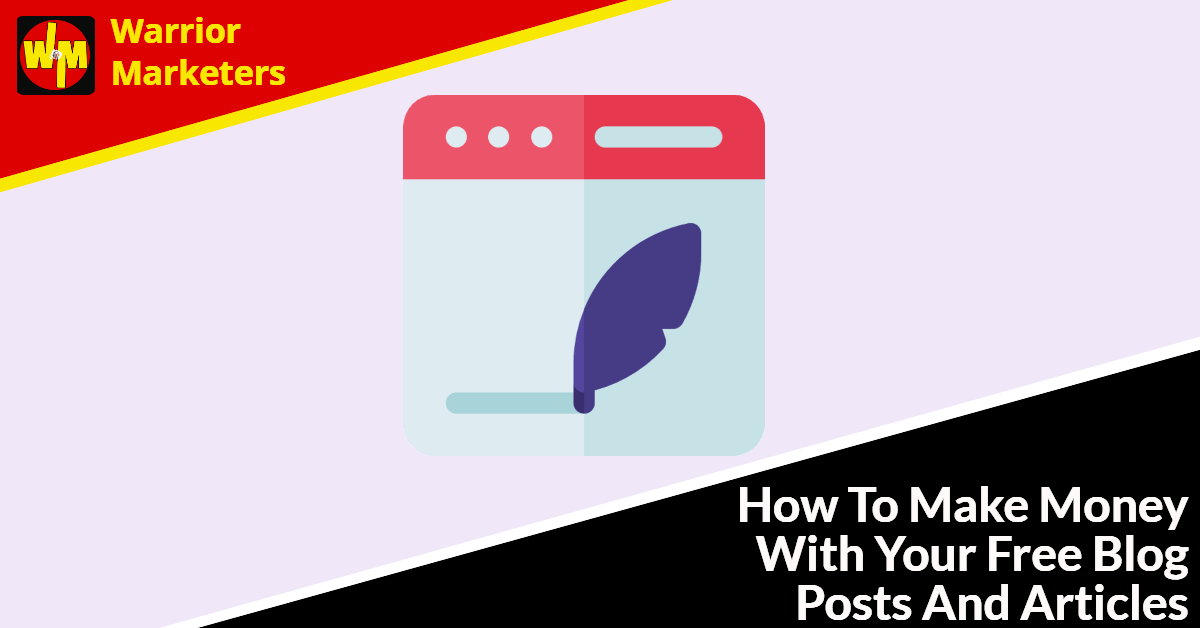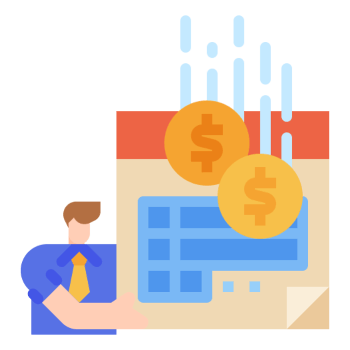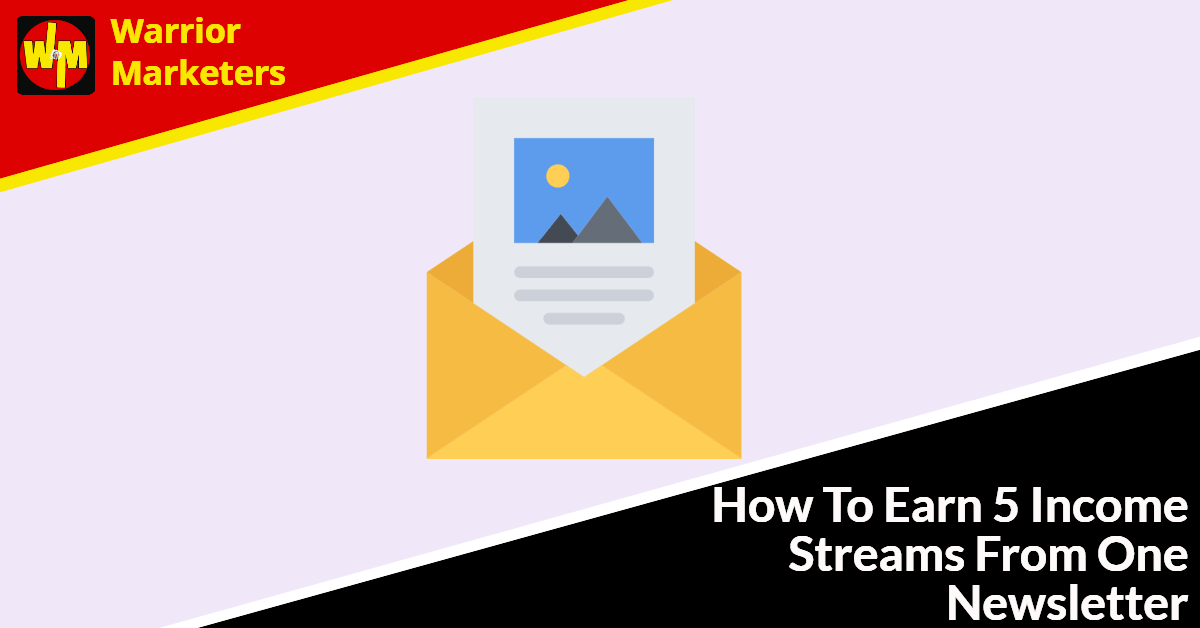Online Marketing Business
Continuity: The Secret To Reliable Profits

When you first get started online, you might be worried. Frankly, you probably should be worried.
Yes, you made sales this month. But will you make sales NEXT month? And how will you pay the bills if you don’t make sales?
It can be scary going from a job where you know exactly how much you’ll get paid and when you’ll get paid to working your own business online.
Of course, online businesses don’t have the large overheads that physical businesses do, and you can get started for virtually free, but for most entrepreneurs the slowly, slowly approach can be a lot to swallow and they want to dive in head first. Sound familiar??
Once you have your business up and running, what then?
In your business you might have a brilliant month and then two months of starving followed by a mediocre month followed by (hopefully) another great month.
The trouble is that if your business is your sole source of income, you want your profits to be a lot more reliable than that!
Or… how do you KNOW for a FACT that next month you can make the mortgage payments and eat, too?

Simple – continuity programs. Call it what you want – memberships, recurring payments, monthlies, etc.
It all boils down to getting people signed up into a continuity program so you can continue to get paid month after month.
Now you have a choice here: You can either promote other people’s continuity programs or create and promote your own.
Drive the traffic, offer your own bonuses, and do what you’ve got to do to get people signed up.
The problem, of course, is that in exchange for less responsibility, you also have less control and more competition.
The membership site owner has control over content. If s/he takes a “churn and burn” mentality and doesn’t care about keeping members happy, then people won’t stay long. You’ll have to continually make new sales, which isn’t what you’re looking for.
You want stability. That’s why you only want to promote truly great memberships and continuity programs that deliver a ton of value.
As to competition, you are competing with every other affiliate who is promoting the same program.
Unless they’re on someone else’s list (they are) who has already promoted the program. In which case, you’re not going to make many sales.
Promoting affiliate memberships is a give and take. Less responsibility, no control and lots of competition.
And this is why you might want to start your own membership. Look around and see what people in your niche desperately want and need, and then fill that want with your site.
Outsource the content creation if you can, so you can focus on the important part – filling it with people.
Use either a WordPress plugin such as Wishlist Member or an independent solution such as Product Dyno to create your membership site.

Once you’ve got your membership site up and running, it’s time to get busy promoting it. Use every technique you can think of and track everything.
Find out what your best sources of traffic are, and then put all of your effort into just those methods.
9 out of 10 new members are coming from Facebook, so what are you going to do?
Drop all of your other methods and focus exclusively on the Facebook advertising.
Get your conversions up and your costs down and now you have a viable way of getting a continuous influx of new members into your site.
One thing you need to be aware of is that selling a membership can be a big ask with cold traffic and your conversion rate probably won’t be stellar.
So, what you could do is offer them a cheap product upfront to get them into your funnel, and then offer them your continuity program.
Plus, most folks won’t even notice a payment for $10-20 leaving their account every month.
Another thing to think about is whether you want to be creating content month after month, year after year. You could outsource the content creation if financially viable, or you could create a fixed membership site with 12 months of content that the customer pays to access.
Want even more members? Show affiliates how well your offer is converting, and you can get them to promote your membership site, too.
There are plenty of affiliates out there who want that continuous, month to month income that a good membership site provides. All you have to do is show them that your funnel is converting, and members are sticking.
Naturally, there are a lot more details than this to starting a membership site. But hopefully this gets you thinking in that direction.
One more thing – the first site is the hardest. Once you have a membership site that’s clearing at least a couple of thousand dollars each month like clockwork, continue to build on that one while building your second membership site, and so forth.
Create a membership empire to secure your finances, and then you can experiment with anything you like.
Security first, right?
By the way, if you want to know more about outsourcing check out this article here and the featured resource below where you get a free report all about successful outsourcing; download, read it and take action 😊

How To Make Money With Your Free Blog Posts And Articles

As a marketer, are you one of those who has a blog or not?
Some marketers don’t use a blog to build their brand or visibility but rather prefer to use more direct response type marketing techniques and have a website to showcase their products with great sales pages and they constantly send paid traffic to those pages.
Visitors will consume their content, come to think of them as someone they can trust, and will be much more likely to buy from them in future. This takes longer than the direct response marketer but is infinitely cheaper and is a good model for someone just starting out who may have limited capital to put into their business.
It’s the second type of marketer to whom this article is addressed.

I’m constantly amazed at how marketers seem to think free content and paid content are two entirely different things. The fact is your most successful blog posts and newsletter articles can make you more money than many of the products you’ve promoted or created in the past an it is super quick to do this and costs you nothing, so what are you waiting for?
The key is to pay attention to how your content is received.
This works great for building brand awareness across multiple platforms and can indirectly lead to sales.
But now let’s take that strategy and put it on steroids and make it a much more direct way to make sales; after all, you are in business to make money!
So, this content repurposing strategy is designed to specifically make you money from your previous content!

Look back at your posts from the past year and see which ones gained the most attention. Which ones did people comment on and forward to others the most?
For example, a little 200-word FB post that people are engaging with and liking the content is trying to tell you that you’ve struck gold.
If it’s a longer article, maybe a blog post and it gets great feedback, even better.
You might choose to expand that article into a full-blown product and sell it or you could use it as a lead magnet that leads to a high-ticket offer (either yours or an affiliate offer).

And talking of lead magnets…
If you are producing free reports as lead magnets (and you should be using these to grow your email list) these are another potential untapped goldmine.
Take your most successful free reports and turn them into paid coaching programs. If you have 4 or 5 reports covering roughly the same topic, it is really simple to bundle them up and sell as a full-blown product.
The other good thing about using these lead magnets is that you probably have links to offers peppered throughout these reports, so not only can you now profit from previously free material, but you can still profit from readers clicking on the links embedded into the reports.

Answer a customer’s question and then send that answer out to your list and see what happens. Do you get a lot of response? Bam! There’s another product waiting to be made.
This is such a simple way to do direct market research and you will know that the demand is there from your existing audience.
If you’re not sure how something is being received, ask your readers what they thought of it.
Take the most popular topics and expand them or repurpose them into something else. You don’t have to continually come up with new ideas. Instead, figure out which ideas are working and then get most out of those.
And you can also purposely float your idea for a new product by creating a mini version of it as a post and then seeing how people respond.
Do you have 10 ideas for products? Create 10 posts, see which one is the most popular and start working on that product right away.
When creating the posts, if they are long, let’s say 1000 words or more, then offer the reader to download them as a convenient pdf. This is a type of content upgrade and they will need to give you their email address to get the report.
This stuff sounds simple and it is, but it also works so please don’t dismiss this strategy.
And because it is mainly using pre-existing content, you can be up and running in a matter of hours.
If you are just starting out and are building out your first blog, bear this in mind for the future.
And if you want to know the best way to get started with blogging you can check out Rapid Blogging Blueprint, a premium training on creating and monetising a blog the right way.
Or you can simply click on the featured resource below for a free Blogging Fundamentals report; download, read it and take action 😊

Are You More Efficient Working From Home?

Working at home gives people the flexibility to be at home, while still being able to collect a paycheck. But, does working at home automatically make you get more done?
The argument is that it’s less stressful not to have that commute hanging over them.
Being able to spend more time with your family is another benefit people associate with working from home. You can be home when your kids come home from school. You’ll be able to go their afterschool activities such as sports games.
People who work at home learn that it has unintended challenges associated with it. For instance, while it’s nice to be around your family, are they letting you get your work done? Are you spending too much time with your family that is taking away from your responsibilities to your job?
You need to work with your family to set up boundaries. This means you should dedicate a space like an office that you use to work. When you are in the office, your family needs to understand that interruptions are off limits, unless it’s an emergency.
You will also need to handle interruptions by neighbors that may visit. While many of your neighbors will be commuting to work, there are more people working from home today.
This increases the chances that some of your neighbors are working from home as well. It’s tempting when you see them outside, to see what they are up to, etc. It’s okay to do this once in a while, but don’t let it interrupt your job.
You may end up working more hours even when you factor in the lack of commuting. Your boss may be inclined to call you up after work hours and ask you to handle some tasks.
If they do this to all employees, then you may not be able to do much to change that. However, if they are singling you out because you work at home and they believe this gives them permission to call upon you, this may be something you need to handle.
So, as you can see, there are some disadvantages to working from home too. However, if you are working from home, it pays to stick to a routine and be organized and the following tips may help.
9 Tips To Help You Stay Organized

Being organized should be a way of life and second nature to you.
These nine tips will help you to stay organized every day with very little effort or fuss.
Check In
Start your day by checking your schedule and your to do list.
It may be that you’ve thought of something you need to add.
Prioritize your to do list so that you tackle the important items first.
Plan
As well as your to do list you should plan your day.
Don’t forget to include scheduled breaks. Make sure to include time for friends and family.
The F.A.R. Rules
The F.A.R. Rules are essential for helping you to stay organized. They apply equally to your personal life as your business.
File it – if it’s important and needs to be kept (either in paper or electronic form) then file it immediately.
Act on it – if something needs to have action taken for example, paying a bill or making a call, then do it immediately. Then either file or recycle it.
Recycle it – whether it’s junk mail or papers and items you’ve finished with, recycle it immediately once it’s no longer needed.
Digital Aids
At times technology can be a distraction but there are some items that can help you become and stay productive.
You may decide that an app to monitor your health and fitness would be a good idea to keep you on track with your goals.
There are also menu planning apps, scheduling, time and project management, as well as household organization apps.
Track
To be successful with your organization skills you need to track and monitor your progress. What’s working and what’s not?
Be prepared to make changes and adjustments to how you do things.
Just because one method of organizing your closet doesn’t work for you it doesn’t mean that another won’t.
Trash It
Don’t keep things for the sake of it.
That way you keep your surroundings free from clutter and distractions.
Identify
Keep a track of what works for you and keep on doing it.
If something hasn’t been successful then identify what needs to be changed and do it that way the following day.
5 Minute Review
Just like you started your day, end your day with a five minute review.
Whatever is left should be added to the next day’s list.
To Do List
Create your to do list for the following day. Include any important tasks that you didn’t complete that day and only important items that need to be done.
Becoming and staying organized doesn’t happen overnight and it does require regular effort. However, you can stay on track by following these nine tips. You can be organized every day with a little planning, time and effort.
If you want more strategies to become more productive check out the featured resource below for a free report; download, read it and take action 🙂

Online Marketers: One Simple Shift That “Guarantees” Success

It’s my opinion that any online marketer – regardless of niche – who doesn’t do the following is essentially hiking up a rocky mountain barefoot when s/he could be taking the ski lift.
But only a relatively small percentage of marketers make the one simple shift that will catapult them to success.
I’m going to focus on product creators here but this applies to affiliate marketing as well.
Normal Product Launch

Here’s the traditional launch a product method:
- You get an idea for a product.
- You do some research and you believe this product will sell well.
- You create the entire product.
- You create the entire sales funnel that will sell the product, including squeeze page, upsells, downsells, sales page, product delivery page, affiliate page, etc.
- You line up affiliates and convince them to promote your launch.
- You launch and you make sales and you don’t sleep for a week because of all the customer service requests and affiliate hand holding necessary.
- Then you pay affiliate commissions, pay affiliate bonuses, pay your web designers and copywriters and all of that if you haven’t already.
- You’re exhausted. And this didn’t make the kind of money you thought it would, so you…
- …start over with a new product and new sales funnel.
- You do this as quickly and as often as you can without going insane.
- Idea – product – funnel – affiliates – launch – repeat.
- You realize you’re working 60 hours a week.
Sound familiar?
“New” Product Launch

Let’s add a twist:
- You get an idea for a continuity product like a membership, newsletter or software as a service.
- You do research to confirm this product will likely sell well.
- You create just a small portion of the product if it’s informational – about one month of content. If it’s software, you outsource the creation of it (unless you’re a coder, which you’re probably not, so let someone else do it for you).
- You create a page to offer either a free or $1 trial of the product. You could create an entire funnel, but you’re lazy so you just create the one page.
- You drive traffic (free or paid) and you get your initial members.
- You continue to get paid on those sales every single month.
- You see which traffic methods are working and you keep using those.
- You regularly update the product.
- You continue to get trial members, many of which continue on as full paying members.
- You may or may not use affiliates – that’s totally up to you.
- This same membership sells for years. YEARS. Because you keep updating it.
- Life is good. You know how much money you will make next month. You work 10-20 hours a month.
- You’re not breaking your own spirit by continually having to create new products. There is no way you would ever get a ‘real’ job again.
The Power Of Residual Income

This second scenario can be just a small launch, perhaps to your own list just to see if it’s going to sell well. You don’t have to sweat the 101 things that go along with a huge launch because this isn’t a: “Sell it hard and get out fast.” kind of thing. You’re selling this membership, newsletter or SAAS for months or years to come, and earning residual income, too.
You can start a membership site in a week and buy enough traffic to see if it’s a winner. If not, tweak it and try again, or get a better idea. You’re not out much money or time. (A full-blown launch can cost you hundreds of hours and a small fortune in copywriting, page design, affiliate contests and so forth.)
And it’s residual. $10 a month. $20 a month. $47 a month. You pick the price. You get 200 new trial members the first week and 100 stick with you – you can do the math. You get 200 new trial members every single week for 52 weeks and half of those stay in the membership for several months – you can do the math.
Yes, there is attrition. But if you’re offering the right newsletter or membership or software, that attrition rate can be surprisingly low. Think of a software someone needs to run their business. Are they going to cancel? Not unless you stop updating.
Think of a newsletter or membership that gives them the crucial info they need to succeed (business or personal, doesn’t matter). Are they going to cancel? No way.
I love products that pay residual income.
I sell my own and I sell other people’s residual products as an affiliate.
My reasoning is simple: Why work myself to death to create products that only pay me one time when I can create products that pay me over and over again? And these are products that I can keep selling for years to come.
Or do you want to have maybe 1 or 2 products that you can continually sell for years that happen to bring you residual income, too?
Residual income might well be considered the 8th wonder of the business world. When you’re earning residual income, you have income security with LESS work than if you did a big fancy launch every 2 to 6 months.
Do you know what it takes to do a big launch? It’s exhausting. And when it’s over and the affiliates are paid and the bonuses are paid and all the expenses are handled, you realize that even though the launch went great (assuming it didn’t flop) you still didn’t make as much money as you thought you would.
Which is why you see marketers doing one big launch after another after another. It’s work and frankly it’s not fun.
If you wonder why so many ‘big name’ marketers come and go after a few years, this is the reason.
Be kind to yourself and work smart. Sell products with residual income.
Of course, to be able to sell anything you need to be skilled at copywriting and there are good and bad ways to do this. To learn about some of the common pitfalls to avoid when copywriting, check out the featured resource below to gat a free report; download, read it and take action 🙂



















